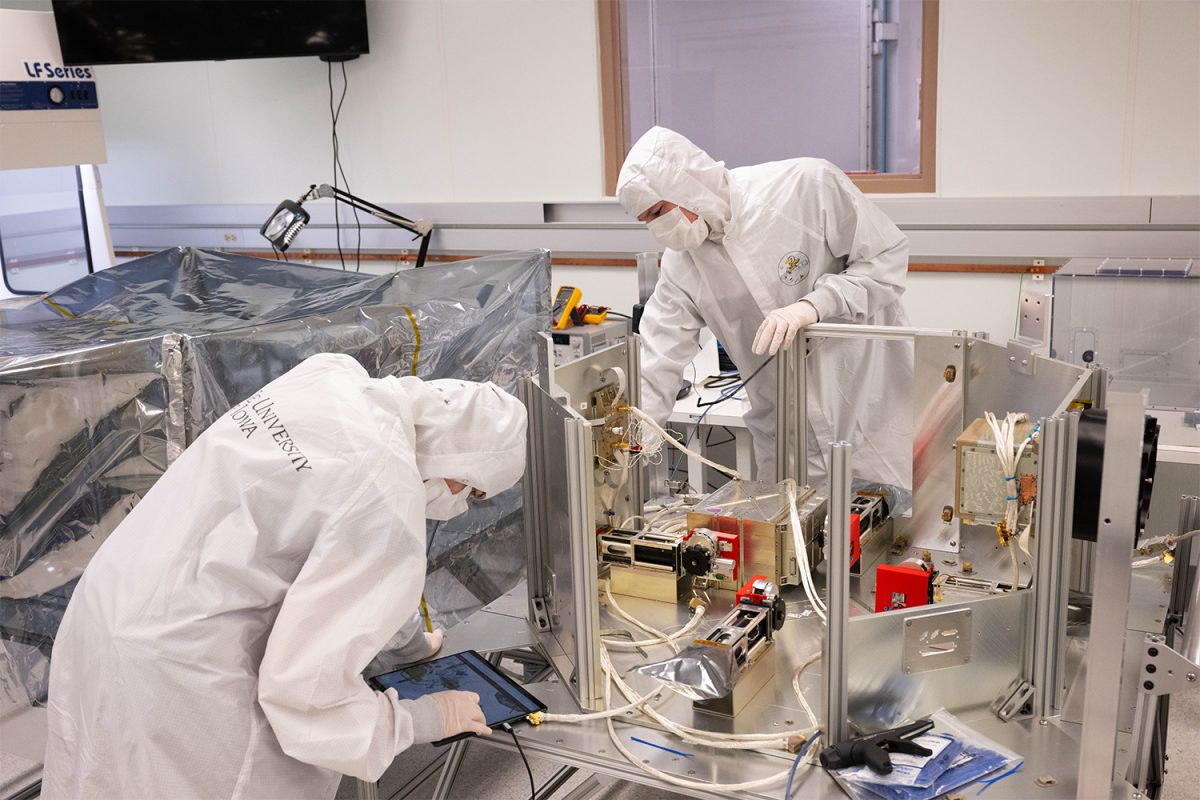The future of space discovery has never been clearer as NASA and researchers across the nation plan to launch twin satellites in less than six months.
In 2019, University of Iowa physicist Craig Kletzing and his team received $115 million from NASA to begin studying interactions between the magnetic fields of the sun and Earth.
Thus, the idea to create the Tandem Reconnection and Cusp Electrodynamics Reconnaissance Satellites, or TRACERS, was born.
Over the past five years, the team has continued crafting the satellites in collaboration with other research institutions nationwide. Those institutions include the Southwest Research Institute, Millennium Space Systems, University of California, Berkeley, University of California, Los Angeles, University of New Hampshire, and the Cleveland Aerospace Technology Services.
UI physics professor David Miles took over TRACERS as the principal investigator after Kletzing’s death in August 2023, and Miles and the team have continued to dedicate their time to completing the satellites.
Professor Jasper Halekas at the UI is the instrument lead for particle sensors on the TRACERS spacecraft.
Halekas designs and builds instruments that measure charged particles around moons and planets, which aids in the understanding of how the sun and solar winds impact the solar system.
“TRACERS is all about understanding how the solar wind, which is a flow of charged particles that streams out from the sun at about a million miles an hour, and understanding how that solar wind flow interacts with our terrestrial environment,” Halekas said.
The two spacecrafts each house a suite of scientific instruments that measure magnetic and electric fields along with charged particles. The two spacecraft will be launched into a low Earth orbit that will go to a special region of the magnetic field known as the cusp.
Halekas said TRACERS will help scientists and researchers understand more about space weather along with the ability to predict and forecast certain hazards.
“As our society becomes increasingly more dependent on things that are in space or connected to space, like communication satellites and GPS satellites, the more we need to understand what we call space weather,” Haleka said.
Now with the spacecraft being completed, the next step is to test the integrated instruments.
“We are going through testing to make sure that the integrated system can withstand electromagnetic radiation, heat and cold, vacuum, and vibration,” Halekas said. “We have a whole series of tests that we put the whole spacecraft through, and then once it goes through all that testing, then it will get taken to the launch site.”
George Hospodarsky, a research scientist and engineer at the UI, is the Magnetic Search Coil lead on the TRACERS project.
RELATED: UI professors build instruments for space mission set to launch with SpaceX in 2025
Hospodarsky said the main purpose of TRACERS is to increase the knowledge of the solar system and the environment around us. In addition, the project allows for those to advance their own research.
“The one benefit would be that graduate students and postdoctoral students here at the University of Iowa and other institutions will be able to use that data to advance their research and learn how to do research,” Hospodarsky said.
UI Professor Allison Jaynes is leading the TRACERS student-sounding rocket project that will fly in conjunction with the TRACERS satellite mission.
“We’re going to have all these students leading the instruments, the science, and even leading the launch call and acting as the principal investigator,” Jaynes said.
Jaynes emphasized that this project is an opportunity to train students in spacecraft missions and inspire them to pursue careers in space physics.
In addition, the TRACERS project has significantly increased the UI’s visibility in solar and space physics, Jaynes said.
“Everyone in solar and space physics is looking at us right now because we’ve got this big mission that we’re leading, and there’s only a couple institutions in the country that even do things like this,” Jaynes said.
With the satellites completed and testing underway, TRACERS is set to launch on April 13, 2025



